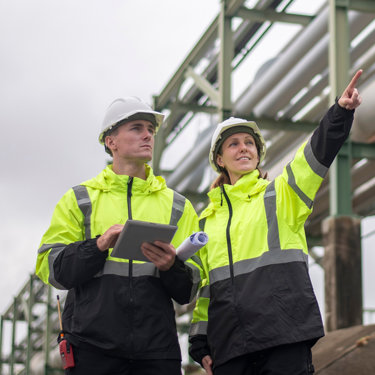Nutrient Neutrality: Going beyond the legal obligation
Published: 29 January 2024
The development industry is undergoing a transformative journey toward sustainability, recognising that responsible growth is not just a business and regulatory imperative, but a societal obligation.
Within this evolving landscape, Nutrient Neutrality emerges as a pivotal concept, seamlessly aligning with the intricate tapestry of legislation. As architects of change in this dynamic ecosystem, developers are on the lookout for innovative solutions that not only adhere to everchanging legal frameworks, but also lay the groundwork for a sustainable future. Andrew McConnachie, Commercial Manager, Water Quality and Ecology, discussed the importance of taking a holistic approach to Nutrient Neutrality Assessment and Mitigation Strategies (NNAMS).
The importance of Nutrient Neutrality
Nutrient Neutrality represents a profound shift in the ethos of development, transcending conventional practices to address the critical issue of nutrient discharge. In an era where water quality concerns and ecosystem preservation take centre stage, developers find themselves under heightened scrutiny. The imperative is not merely to meet regulatory requirements, but to champion practices that actively contribute to environmental sustainability and corporate societal responsibility. As thought leaders, it becomes imperative to internalise Nutrient Neutrality not only as a regulatory mandate, but as a solemn pledge to safeguard our environment for generations to come.
Taking a holistic approach
Nutrient Neutrality extends beyond the realms of mere compliance; it should be part of a holistic approach. We envision change as more than a necessity, viewing it as an opportunity to empower tier one suppliers in the development industry. Our commitment is not just to provide NNAMS, it is to tailor these solutions intricately, weaving them into the unique fabric of each development project. We recognise the interplay for example with industry wastewater management needs and other asset owning sectors and organisations to ensure holistic outcomes.
Navigating current legislation and compliance
The ever-evolving landscape of environmental legislation presents a challenge for developers to navigate. We can help you not only to align with current legislation but to surpass it. Our NNAMS solutions serve as a testament to our commitment to sustainable development. Beyond meeting regulatory standards, we strive to be at the forefront of the larger mission—contributing actively to the overarching goal of environmental stewardship.
The process
Assessment
An expert assessment delves deep into the nutrient discharge profile of a development project. This involves a meticulous evaluation of existing systems, identification of potential nutrient release sources, and a comprehensive assessment of the ensuing environmental impact.
Design
With a tailored strategy, the outline and detailed design phase should focus on cutting-edge technologies and sustainable practices to not only minimise nutrient discharge, but also to optimise project efficiency.
Implementation
By seamlessly integrating NNAMS into the development process, you can ensure that the designed strategies are not just theoretical but are implemented effectively, mitigating nutrient discharge at every crucial stage of the project.
Monitoring
Continuous monitoring should be the cornerstone of your NNAMS approach. Utilising advanced monitoring tools to track nutrient levels in real-time allows for swift adjustments and ensures sustained, evidenced-based compliance with legislative standards.
The responsible choice
Nutrient Neutrality, far from being a mere legal obligation, is a covenant to construct a sustainable future. It represents a choice for responsible growth and a lasting environmental impact. The onus lies on developers to select partners who share this vision. In the complex landscape where every developmental decision resonates, choosing the right supplier can set you on a transformative path toward sustainability—one that echoes with the principles of responsibility and environmental consciousness.
More from our Knowledge Hub
 Insights
InsightsMitigating climate change risks through planned preventive maintenance
 Insights
InsightsProtective coatings: Safeguarding infrastructure against climate change
 Insights
InsightsDelivering the Water (Special Measures) Act: Supporting compliance and innovation
 Insights
InsightsA guide to navigating climate change regulations for UK businesses
Environmental compliance today, creating a sustainable tomorrow
Helping you reduce risk to the environment and your operation by managing assets compliantly while achieving commercial, ESG, and net-zero goals.
Contact our experts

